May 13, 2012
It is finally time to get back into cruising mode! We have chosen the Exuma Islands in the Central Bahamas as our destination. The plan is to depart Palm Beach, work our way slowly to the Exumas, spend 4-6 weeks there, then return to Palm Beach to finish the last remaining details from our repairs and to fix any new issues that come up on this shakedown cruise. On this trip Bradley and I are handling the boat completely on our own.
Once we were finally ready to depart for the Bahamas, the winds decided to blow 20-25 knots from the east for a few days, so we waited for them to settle down. The boat could certainly have handled it, but we were looking for a comfortable and uneventful trip. Finally on May 3 we departed Old Port Cove Marina and made the short (1 hour) trip to Lake Worth Inlet where we anchored for the night, positioned for an early morning departure to West End on Grand Bahama Island. There were two reasons for the short first leg. First, we need a near high tide to safely get out of the marina, so there are only certain windows of opportunity to exit. We also wanted to time our trip so that we arrived at West End in daylight and in time to make it to the Customs office before their 5pm closing.
At 54 miles and with the Gulf Stream to cross, that means about an 8 hour trip, so an early morning departure is desired and we wanted to be close to the open ocean for a departure before sunrise (ie, in the dark), Second, we wanted a night at anchor to allow our bodies to adjust to the motion of the boat and to run the generators and make sure our battery charging systems are working OK. The night at anchor was lovely and despite a small problem with the charging system, we were GO for departure!
We woke early and were on our way at 4am the next morning. The trip across was delightful – perfect conditions and all our new electronics performed very well. We arrived at West End, Grand Bahama around noon. The only reason we were stopping at West End was to clear customs and obtain our cruising permit. We did not really want to have to take the big boat in to the marina, and it was low tide, so we decided to anchor outside the harbor entrance, launch the tender, and have Bradley go in to see if we could get cleared in without bringing the boat into the harbor. We had obtained all the forms in advance and everything ready to go. We hoisted the yellow “Q” flag – to show that we had arrived in a new country but had not yet cleared through customs. “Q” means quarantine, from days when incoming boats were quarantined to ensure no infectious diseases were on board and whenever a vessel enters a new country, the first order of business is to “report in”. The Bahamas have so much boat traffic from the US that the customs process is fairly quick and easy. Bradley set off in the little tender and was back in 30 minutes, cruising permit in hand! We lowered the “Q” flag and hoisted the Bahamas “courtesy flag”, a small flag of the country you are visiting,on the starboard halyard which signifies that you have entered the country legally. Our larger, country of registration flag from the Cayman Islands, is flown from the stern of the boat at all times.
Although the holding was poor (meaning the anchor could not really dig in securely), there was almost no wind, so we stayed overnight at our anchorage where we were treated to a spectacular full moon – actually a Super Moon where the moon is at its closest point to the earth and also full. This happens only once a year and it truly was beautiful! The next leg of our trip would be between 50 and 70 miles. We had two possible stopping points with the option to continue on past the first if things were going well. We again departed early – at 3am – and had a fabulous trip in calm conditions. We decided to continue past the first stopping point and travel through the Northwest Channel, arriving at the Joulter Cays at the top of Andros Island around 4pm.
Now it was time for some playing and relaxing. We couldn’t wait to get in the water and do some snorkeling. I also wanted to try out my new underwater camera. The water was warm and crystal clear. We found some small reefs with some nice snorkeling and really enjoyed being back in tropical waters! We then moved a few miles south to Morgan’s Bluff, where there was a bit more shelter and some better snorkeling. We had two nice nights there and took the little tender out for some good rides. While the size of this tender makes it very easy and safe for us to get on and off the big boat, the ride is quite a bit bumpier than the large one we left behind for this trip. This tender is an inflatable with an air floor, which means you REALLY feel the water – each wave is like a speed bump. It’s great for short trips or when the water is flat, but is more of a challenge in choppy seas. We’re still convinced the right answer is something in between the two!
From Andros, we were set to head to the Exumas. Our plan was to go across the Tongue of the Ocean, then to anchor somewhere on the Exuma Bank. Our start was delayed due to a problem with one of our watermakers (more on technical problems later). But by 7:30am we were underway for an 11 hour journey to Norman’s Cay where we anchored for a night. Next it was south to Staniel Cay. Once on the Bank, depths are much shallower, making for a more nervous journey. We kept a sharp lookout, being careful not to venture into the really shallow parts! Fortunately, the water is crystal clear here and it is easy to see the differences in depths reflected by different colors of the water. Once at Staniel Cay we found a fellow Nordhavn (a 68 footer) with her owner George aboard. George has cruised extensively in the Bahamas and was a great source of information for us since our boats both require the same amount of depth – about 7.5 feet. It was great to catch up with George and he came aboard for a nice dinner on the flybridge.
We did a little snorkeling and moved for a day six miles south to Black Point on Bitter Guana Island where we found more good snorkeling and a few small caves that were fun to explore. We are enjoying having some time to relax and catch up on reading. There is no internet access here so we are quite islolated – just what we wanted! As the winds again changed direction, we headed back to Staniel Cay where we visited the famous Thunderball Grotto, a snorkeling cave made famous by the James Bond movie Thunderball. We met a nice couple aboard a sailboat, Dianne and Walter, and visited each other’s boats for happy hours. We’ll hang out here for a little while before heading south, ultimately to George Town to pick up some guests in a couple weeks.
Below are more photos and below that is some information about the technical problems we experienced on this trip for those who are interested.
There are also some new book reviews and a 3 minute video of the highlights of our trip so far. Leave a comment or click here to send me an email.
- Sunset at West End
- Full Moon reflects on water at Andros
- Sunset neat Morgan’s Bluff, Andros
- A nice reef fish, but a little too small for dinner
- Reef fish
- The colors in the water are wonderful – easy to see depth changes
- Fish on the Reef at Black Point
- No internet access, but the flybridge is a great place in the evening!
- Lion Fish – an invasive species that is damaging the reefs
- Bradley and our small tender at sunset in Staniel Cay
- More pretty reef fish
- Bradley investigates a reef
- A “sand castle” house at Black Point
- Cave at Black Point from the outside
- Cave at Black Point from the inside
- View from Black Point land
- Our Route from Palm Beach to the Exumas
- Our anchorage at Staniel Cay/Big Majors
Technical Problems
Warning – this section is only for those who are interested in technical aspects of equipment and problems. No mention of sunsets or rainbows…….
This trip is serving as a shakedown cruise for all the new equipment we have installed over the past eight months. We expected to have some problems, but for the most part things have worked well. Here are a few of the problems we have found:
- Mastervolt charging system. We replaced our previous Xantrex Inverters with a Mastervolt system made up of three battery chargers, one inverter, two shunts, and two control units. This system converts incoming 120 or 240V AC shore power (or onboard generator power) to 24V DC to charge the 2040 Amp Hour battery bank and, when operating the boat on battery power, converts (inverts) 24V DC from the battery bank to 120 and 240V AC. The battery charge levels are monitored by the Mastervolt control unit as well as by a separate Xantrex meter. This allows us to see how many amp hours have been used and what percentage of the total 2040 amp hours have been consumed so that we can determine when it is necessary to run the generator when not connected to shore power. Prior to leaving Palm Beach, we had adjusted the settings on our Mastervolt controls to allow it monitor the system as a whole – that is, to show the total amp hours used for the whole battery bank, the percentage of overall charge for the entire battery bank, the amp hours being put in from all three chargers, and other data about usage. That involved setting the two shunts up as one “virtual shunt”, per instructions from Mastervolt and under the supervision of an electrical engineer and Mastervolt dealer, James C. After disconnecting from shore power and moving to our first anchorage, Bradley noticed that the battery charge percentage for the batteries was different between the Mastervolt meter and the Xantrex meter. Initially we were concerned that the charging system was not functioning properly as the Mastervolt meter showed the batteries losing amps faster than we thought they were being consumed by onboard systems. After some diagnostics and a phone call to James C., we determined that when we set up the virtual shunt for our 2040 amp battery bank, the Mastervolt system calculated that the bank was actually half that capacity, so it is using 1020 amp hours for all its calculations. The charging system is actually working properly, but the Mastervolt controls will have to be re-programmed, which I will do next time we are on shore power and in phone range in case I need help. For now, the Xantrex controls are accurate and allow us to determine the real battery status.
- One of the last repairs we undertook was for our watermaker systems. The Village Marine tech, Tom, visited us several times to replace various electronic controls. Since we didn’t know exactly what parts were bad, we would replace one, then test, only to find something else not functioning. However, after several visits, all appeared to be working. We replaced all the membranes as well as the control units, so the systems were like new. We tested the system in the marina, but did not put any of the “product” water into our water tanks. We have two identical watermakers located in the engine room. There are various parts – low pressure pump, high pressure pump, filters, and membranes. The control units are stacked with one atop the other. The first time we tried to make water while at anchor, Unit 2 functioned perfectly. The first step is for it to take in sea water, then to begin the reverse osmosis process to turn that into fresh water. A salinity meter tests the product water, which is “dumped” back into the sea until salinity reaches less than 500 ppm (parts per million). Then a valve is triggered and the water is directed into our fresh water tanks. Unit 2 quickly achieved the required salinity and water was directed to the tanks. However, unit 1 was taking a long time for the salinity to come down. It was gradually reducing and we theorized that there was a lot of salt built up in the system, so we continued to let it run, monitoring the salinity from the remote panel in the pilothouse. Finally the salinity approached 500 ppm, but when Bradley went below to check, he found that a hose on that unit had sprung a leak and water was dripping onto unit 2. We shut off Unit 1 and determined the leak was coming from a hose connector. Perhaps this was what had caused all the trouble. Bradley tightened the connection and we re-started the unit. Again it took a long time for the salinity to come down, but it did, slowly but surely. We went about some other projects and when I returned to check, I found the hose had once again come apart and was leaking profusely onto Unit 2, which was now showing an error message on the control. It also looked like some water had gotten into the control panel. Now, neither unit was operational, and we were not about to go cruising without at least one functional watermaker. We killed the power to both units and removed the front of the control panel for unit 2, cleaning up all obvious water. Fortunately it was fresh water, not salt water! We left it to sit overnight and in the warm and toasty engine room, overnight it had dried nicely and Unit 2 fired up with no problem and has been working great. Unit 1, however, is out of commission until we can determine what is wrong. It seems there are two problems; taking too long for the salinity to come down, and then when it does, some problem with opening the valve to the tank, result in pressure that blows out the hose connection. We’ll be emailing our Village Marine tech in an attempt to diagnose and fix remotely.
- Our autopilot (Simrad AP25) continues to have intermittent problems with Nav mode as reported in the last post. Sometimes when it reaches a new waypoint, the BWW (bearing from waypoint to waypoint) field is null (zeroes), causing the auto to get an inaccurate course to steer to the next waypoint. I gather some additional data from Navnet when this occurs, and confirmed that Navnet is showing the proper course to the next waypoint, so the problem lies somewhere in the transmission of data from Navnet to the Autopilot. This is a minor annoyance as we do not rely on this feature. Especially here in the Bahamas with very little water below our keel, we rely on a sharp lookout and attention to course. Our routes and waypoints serve only as a guideline.
- We have noticed a problem with our Nobletec Trident chart system in which it seems to report erroneous distance and time to arrival data for waypoints along a route. We have documented this problem and will work with Nobletec support to try to resolve.
- While at Morgan’s Bluff, we encountered a small but severe thunderstorm (sound familiar?). It was alarming as there were several strikes very nearby with terrific thuncerclaps. Later, we noticed several problems. First, we were unable to get the display from our Navigation computer into the Flybridge. This turned out to be due to a tripped power outlet that, once reset, resolved the problem. Second, we found that our phone system was not working (this system is a small PBX that provides intercom and links to our satellite phone and onboard cell phone (when we have cell coverage)). Tracking that down revealed a power strip/surge protector that was dead. Replacing it had the phones back online. But it seemed to confirm that we had been very close to lightning yet again! The third problem is that we are no longer able to get video from our DirecTV system into the main salon. Here in the Bahamas, we are still able to receive DirecTV and we have two receivers. One provides service for all the sleeping cabins and the other is for the main salon only. We are able to get the audio from that receiver but no video. We can get video from our DVD player, so it appears the problem is either with the DTV receiver or somewhere in the connection. We don’t really need TV anyway, but we still look forward to the day when everything just works perfectly……LOL.
Otherwise, things have been working pretty much as designed. It’s been a good opportunity to learn about all of our new electronics. We can now program custom displays on our Furuno RD-33 (wind meter), use the Furuno radar much more effectively by setting up guard zones and automatic target acquisition, which then overlays onto our charts, use the Nobletec logging function to determine if we are moving from our anchor location (which we can then monitor from the master cabin TV), and much more!
More details about all the lightning strike repairs are still being written.






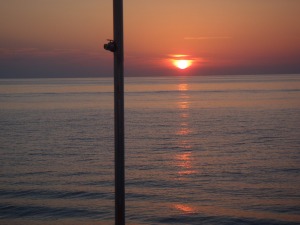
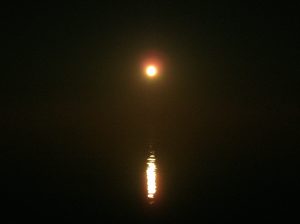

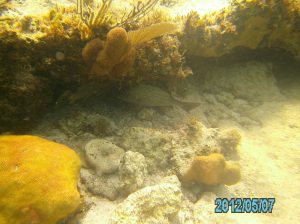




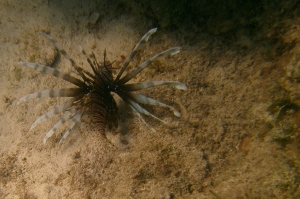




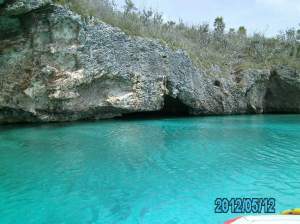
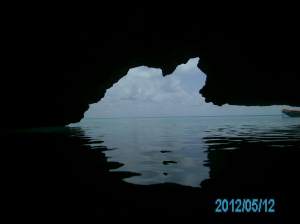



#1 by omegle cams on June 25, 2014 - 8:04 pm
It is not my first time to pay a quick visit this web page, i am browsing this website
dailly and take fastidious information from here everyday.
LikeLike
#2 by chat for free on October 18, 2013 - 9:07 pm
Great article! That is the type of information that are meant to be shared across the net.
Shame on the search engines for not positioning this put up higher!
Come on over and seek advice from my site . Thank you =)
LikeLike
#3 by Dannie on August 6, 2013 - 6:59 am
Wow what an amazing sunset. Thank you for taking me to te various islands in the Bahamas through reading your post.
LikeLike
#4 by Dannie on May 31, 2013 - 7:02 am
One day the boys and I will join you guys….one day.
LikeLike
#5 by Anonymous on May 19, 2012 - 2:17 pm
Glad to hear your making progress on your lightning damage. Have a great trip. Gary Henderson
LikeLike
#6 by Julie Sannicandro on May 17, 2012 - 7:20 pm
Hey Bradley and Kathy,
Sounds like a dream come true:) The pictures are incredible and the trip sounds exciting:) So glad you guys are enjoying yourselves and hope you will continue to be safe. Again the pictures are beautiful!
Love ya both!
Jewels
LikeLike
#7 by Cedric on May 17, 2012 - 6:15 pm
Thanks, Kathy. A pleasure to read your reports, as always. In case you’re wondering, there are many of us tech junkies out here that love all of the details. Please keep them coming.
LikeLike
#8 by Debbie on May 17, 2012 - 12:20 pm
Kathy and Bradley, so nice to hear you are cruising again and things a working well! The Bahamas sound lovely. Hopefully we will have an opportunity to be in the same ocean sometime. Debbie and Rick, Eliana
LikeLike
#9 by Dannielle Brown on May 17, 2012 - 6:31 am
Very nice. I really enjoy reading your post. I feel like you take us with you both on the journey. Thank you for sharing. The caves look very exotic and I can imagine the excitement of exploring them and discovering something new.
LikeLike
#10 by Anonymous on May 17, 2012 - 6:25 am
Kathy and Bradley,
Great post! It sounds like a great trip and glad to read that most of the technical issues are resolved. Appreciate the information on the Q flag and the other flag. It is good to read that traditions continue in our high tech world. Today is one of those beautiful days in No. VA. – blue sky, no humidity and temp to be in the high 70s. Love the book list. I concur with your review Bradley of the Steve Jobs book. It was very well written and described Jobs as a true capitalist by having a dream and taking the risks to reach it. Please be careful out there. As they say, Fair Winds. Sandy
LikeLike
#11 by Anonymous on May 17, 2012 - 5:48 am
Nice blog entry, great pics and video. We are envious. Regarding your technical problems, glad to see you are taking them in stride, that seems to be part of cruising. I had a problem with my autopilot a couple of years ago. I took apart the hydraulic pump and discovered a lot of crud in it, cleaned it up, re-assembled it and bled the lines and it worked perfectly. Your problem sounds like a software issue but I’ve heard that the pumps can act up, Take care.
LikeLike
#12 by Anonymous on May 17, 2012 - 5:43 am
Giday – Glad to hear of some flag etiquette aboard; can I fly my RORC burgee from the STB halyard as well or will you religate me to the PORT Halyard. What distance did you set for the radar guard zone 12 miles? or more? I’d be keen to know what you have done about lighting protection; seems everybody has a different solution but few have actually suffered the consiquences. Neil
LikeLike